Best SSDs: May 2021
by Billy Tallis on May 14, 2021 8:00 AM EST- Posted in
- Storage
- Guides
- SSDs
- Buyer's Guides
- Gift Guide
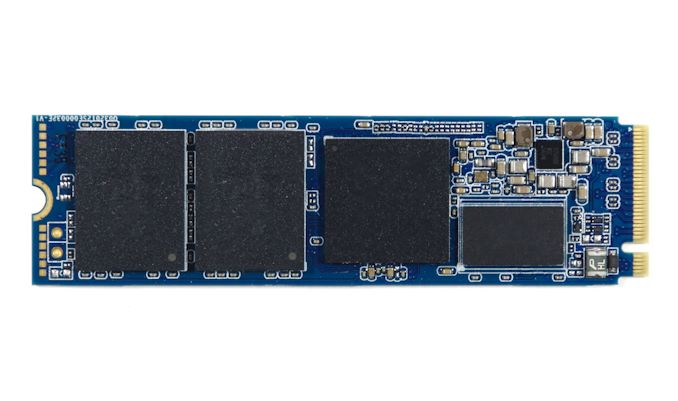
In our series of Solid State Drive guides, here’s the latest update to our list of recommended SSDs. All numbers in the text are updated to reflect pricing at the time of writing.
Best SSDs: May 2021
A solid state drive is often the most important component for making a PC feel fast and responsive; any PC still using a mechanical hard drive as its primary storage is long overdue for an upgrade. The SSD market is broader than ever, with a wide range prices, performance and form factors.
The big news in the storage market right now is the Chia cryptocurrency craze. That has been driving up storage prices, but it's had more of an impact on hard drive prices and availability than on SSDs. We are seeing reduced supply and increased pricing mostly on larger (multi-TB) NVMe SSDs, but in other segments of the market pricing over the past several weeks has been flat or only slightly increasing.
It's almost time for us to drop 250GB drives from the guides. In some market segments they're now only a few dollars cheaper than 500GB class drives, which will tend to be faster as well as offering more headroom for a modest media library or a few games.
| May 2021 SSD Recommendations | ||
| Market Segment | Recommendations | |
| Entry-level NVMe | Inland Platinum 2TB | $208.99 (10¢/GB) |
| Mainstream NVMe | Mushkin Pilot-E 1TB | $109.99 (11¢/GB) |
| Premium NVMe | WD Black SN850 1TB | $199.99 (20¢/GB) |
| Mainstream 2.5" SATA | WD Blue 2TB | $199.78 (10¢/GB) |
| M.2 SATA | WD Blue 2TB | $209.99 (10¢/GB) |
| Extreme Capacity | Inland Platinum 4TB | $489.99 (12¢/GB) |
Above are some recommendations of good deals in each market segment. Some of these aren't the cheapest option in their segment and instead are quality products worth paying a little extra for.
The next table is a rough summary of what constitutes a good deal on a current model in today's market. Sales that don't beat these prices are only worth a second glance if the drive is nicer than average for its product segment.
| May 2021 SSD Recommendations: Price to Beat, ¢/GB | |||||
| Market Segment | 256 GB | 512 GB | 1 TB | 2 TB | 4 TB |
| Budget 2.5" SATA | 14 ¢/GB | 10 ¢/GB | 9 ¢/GB | 10 ¢/GB | 10 ¢/GB |
| Mainstream 2.5" SATA | 17 ¢/GB | 11 ¢/GB | 10 ¢/GB | 11 ¢/GB | 11 ¢/GB |
| Entry-level NVMe | 16 ¢/GB | 12 ¢/GB | 11 ¢/GB | 11 ¢/GB | 16 ¢/GB |
| Mainstream NVMe | 18 ¢/GB | 14 ¢/GB | 13 ¢/GB | 13 ¢/GB | 20 ¢/GB |
| Premium NVMe | 32 ¢/GB | 20 ¢/GB | 20 ¢/GB | 20 ¢/GB | 23 ¢/GB |
| M.2 SATA | 18 ¢/GB | 14 ¢/GB | 12 ¢/GB | 10 ¢/GB | |
As always, the prices and recommendations here are a mere snapshot of the market at the time of writing, based on major North American online retailers. The best deals in each market segment can change on a day to day basis, and availability of specific models and capacities can be unpredictable.
NVMe SSDs
Entry-level NVMe: Inland Platinum (QLC)
The entry-level NVMe SSD market segment consists of drives that make significant technological compromises to cut costs. This is where we classify all the DRAMless NVMe SSDs and those using QLC NAND. For the most part these drives all offer better real-world performance than mainstream SATA SSDs, and with little or no price premium. Most of these drives use 4-channel controllers, but a few have 8-channel controllers which help them reach sequential transfer speeds closer to what we expect from mainstream NVMe drives.
This is the most technologically diverse segment of the consumer SSD market, since there are so many viable ways to cut costs while still offering much higher performance than SATA drives are capable of providing.
| 240-256 GB | 480-512 GB | 960 GB-1 TB | 2 TB | |
| ADATA Swordfish TLC, DRAMless |
$35.99 (14¢/GB) |
$56.99 (11¢/GB) |
$99.99 (10¢/GB) |
$199.99 (10¢/GB) |
| Crucial P2 TLC, DRAMless |
$44.99 (18¢/GB) |
$57.99 (12¢/GB) |
$104.99 (10¢/GB) |
$190.99 (10¢/GB) |
| Kingston A2000 TLC |
$42.99 (17¢/GB) |
$60.45 (12¢/GB) |
$108.49 (11¢/GB) |
|
| Samsung 980 TLC, DRAMless |
$49.99 (20¢/GB) |
$69.99 (14¢/GB) |
$129.99 (13¢/GB) |
|
| WD Blue SN550 TLC, DRAMless |
$49.99 (20¢/GB) |
$59.99 (12¢/GB) |
$109.99 (11¢/GB) |
|
| Inland Platinum QLC, 8ch |
$102.99 (10¢/GB) |
$208.99 (10¢/GB) |
||
| Sabrent Rocket Q QLC, 8ch |
$69.98 (14¢/GB) |
$109.98 (11¢/GB) |
$249.98 (12¢/GB) |
|
| Intel SSD 670p QLC |
$59.99 (12¢/GB) |
$114.99 (11¢/GB) |
Micro Center's Inland Platinum continues to be one of the most affordable QLC drives at the 1TB and 2TB capacity points. For smaller capacities, we recommend avoiding QLC and going with a DRAMless TLC drive if necessary. The WD Blue SN550 and Samsung SSD 980 are the two fastest DRAMless drives, and for most common use cases the fact that they're DRAMless won't be a handicap. Kingston's A2000 is the cheapest TLC NVMe drive with DRAM, but its peak performance is rather low due to the outdated controller.
Mainstream NVMe: Mushkin Pilot-E and HP EX950
SSD performance that more or less saturates a PCIe 3 x4 interface is now pretty standard. This market segment has the most lively competition and a wide range of options. These drives all use TLC NAND and most use 8-channel controllers, so they're all plenty fast for almost any consumer use case. Many drives that were top of the line one or two years ago are still available at greatly reduced prices.
A lot of models in this segment that have been on the market for a long time have unfortunately seen silent changes to their components. Updating from 64L to 96L TLC is usually nothing to complain about, but some of the controller changes really should have been introduced with new models. Switching from 256Gbit to 512Gbit TLC dies can also lower performance, especially for the lower-capacity drives. Many of the cheaper drives based around the Phison E12 controller have switched to the more compact E12S variant and reduced the amount of DRAM, which hurts performance a bit on the heaviest workloads. Some drives based on the Silicon Motion SM2262(EN) controllers have also seen tweaks that may hurt performance a bit. A few brands have even taken the more drastic step of switching between SMI and Phison controllers without renaming the product—we've seen kind of behavior before in cheaper market segments, but it's a new low for this market segment.
Ultimately, despite such unannounced hardware changes, these drives are still suitable for inclusion in this category. The performance changes are minor and seldom noticeable in real-world usage. What we're seeing is really a result of the competition for the performance crown moving into the PCIe 4.0 space. SSD makers are much less focused on performance for their PCIe 3.0 products now and are making very reasonable compromises to deliver more affordable products. The only problem here is the lack of transparency.
| 240-256 GB | 480-512 GB | 960 GB-1 TB | 2 TB | |
| ADATA XPG Gammix S50 Lite (PCIe 4.0) | $139.99 (14¢/GB) | $259.99 (13¢/GB) | ||
| Inland Premium | $41.99 (16¢/GB) | $63.99 (12¢/GB) | $132.99 (13¢/GB) | |
| PNY XLR8 CS3030 | $42.99 (17¢/GB) | $64.99 (13¢/GB) | $124.99 (12¢/GB) | $249.99 (12¢/GB) |
| Mushkin Pilot-E | $47.99 (19¢/GB) | $64.99 (13¢/GB) | $109.99 (11¢/GB) | $244.99 (12¢/GB) |
| HP EX950 | $77.99 (15¢/GB) | $119.99 (12¢/GB) | $234.99 (12¢/GB) | |
| Samsung 970 EVO Plus | $89.99 (18¢/GB) | $159.90 (16¢/GB) | $299.99 (15¢/GB) | |
| SK hynix Gold P31 | $74.99 (15¢/GB) | $134.99 (13¢/GB) | ||
| WD Black SN750 | $58.99 (24¢/GB) | $69.99 (14¢/GB) | $129.99 (13¢/GB) | $309.99 (15¢/GB) |
The PNY XLR8 CS3030 isn't quite the cheapest Phison E12 drive, but at the lower capacities it's only $1 more than the drives that come with shorter three year warranties rather than the standard five years. For larger capacities, the best prices are currently on the Mushkin Pilot-E and HP EX950, both drives based on the SM2262EN controller that provides great peak performance. The SK hynix Gold P31 has occasionally been on sale, but is mostly sticking to its original launch pricing that is a bit above average for this market segment. For consumers concerned with maximizing battery life without sacrificing performance, it may be worth paying that small premium.
Premium NVMe: WD Black SN850 and ADATA XPG Gammix S70
Most of the major players have delivered their high-end PCIe 4.0 competitors. Silicon Motion's SM2264 controller is still MIA, and the various Phison E18 drives will soon be getting refreshed with 176L TLC. In the meantime, the WD Black SN850 seems to be the overall performance king by most measures, though real-world differences are very minor. ADATA's XPG Gammix S70 featuring the Innogrit Rainier controller is a bit slower than most of the other current flagships, but it's also discounted by a bit, especially for its 2TB model. At capacities below 1TB, none of these controllers have enough flash to reach full speed, so an older and cheaper Phison E16 based drive like the Sabrent Rocket 4.0 may make more sense—but those E16 drives are getting a bit harder to find in stock.
| 240-280 GB | 480-512 GB | 960 GB-1 TB | 2 TB | |
| ADATA XPG Gammix S70 | $179.99 (18¢/GB) |
$349.99 (17¢/GB) |
||
| Patriot Viper VP4300 | $224.99 (22¢/GB) |
$449.99 (22¢/GB) |
||
| Samsung 970 PRO | $156.29 (31¢/GB) |
$249.99 (24¢/GB) |
||
| Samsung 980 PRO | $79.99 (32¢/GB) |
$119.99 (24¢/GB) |
$199.99 (20¢/GB) |
$399.99 (20¢/GB) |
| Sabrent Rocket 4.0 | $89.98 (18¢/GB) |
$159.98 (16¢/GB) |
$399.99 (20¢/GB) |
|
| Sabrent Rocket 4 Plus | $199.98 (20¢/GB) |
$449.15 (22¢/GB) |
||
| WD Black SN850 | $128.74 (26¢/GB) |
$199.99 (20¢/GB) |
$399.99 (20¢/GB) |
|
| WD Black AN1500 | $299.99 (30¢/GB) |
$549.99 (27¢/GB) |
SATA SSDs
The SATA SSD market is unsurprisingly pretty stagnant. It's becoming increasingly common for manufacturers to silently update the NAND in SATA SSDs without changing the product name, which is why products like the Crucial MX500 are still around with no successor on the horizon. While in the past we have strongly criticized this kind of silent swapping of components, a straightforward update from 64L to 96L flash doesn't have much impact on performance of SSDs that are already constrained by the SATA interface. We continue to condemn any invisible product updates that swap TLC for QLC or switch to a DRAMless SSD architecture.
Options for high-capacity multi-TB consumer SSDs are increasing, with some product lines now going all the way up to 8TB. But at the opposite end, we're seeing disappointing prices on 256GB models: for quite a while they've been more expensive on a per-GB basis than 512GB and 1TB models, but that gap is widening. As with 120GB models, these lower capacities are starting to be left behind as flash memory technology pushes for higher capacities. These drives are still fine options for users with modest capacity and performance requirements, but stepping up to a faster 500+GB model is now usually very cheap.
Mainstream 2.5" SATA: WD Blue 3D NAND
We consider mainstream SATA SSDs to be those that use TLC NAND and have DRAM buffers. These offer performance and reliability that's a step above budget models with DRAMless controllers or QLC NAND (or both). We don't bother making recommendations for those budget-oriented models, because the right answer is usually just whatever's cheapest at the time, and with many of those products it's impossible to keep track of what kind of components they're using from one month to the next.
| 240-256GB | 480-512GB | 1 TB | 2 TB | 4 TB | |
| Samsung 870 EVO | $44.99 (18¢/GB) | $64.99 (13¢/GB) | $119.99 (12¢/GB) | $229.99 (11¢/GB) | $479.99 (12¢/GB) |
| WD Blue 3D NAND | $44.99 (18¢/GB) | $59.99 (12¢/GB) | $99.99 (10¢/GB) | $199.78 (10¢/GB) | $426.99 (11¢/GB) |
| Crucial MX500 | $49.70 (20¢/GB) | $55.99 (11¢/GB) | $97.99 (10¢/GB) | $210.00 (11¢/GB) | |
| SK hynix Gold S31 | $43.99 (18¢/GB) | $56.99 (11¢/GB) | $104.99 (10¢/GB) |
For the lower capacities, the SK hynix Gold S31 is currently a great option, while the WD Blue provides good deals for the 2TB and 4TB models. Since low-capacity NVMe drives are faster than SATA drives and carry little to no price premium, the SATA drives deals that are most interesting are on the larger capacity models where there's still a significant premium for NVMe.
Niche Product Segments
M.2 SATA: WD Blue 3D M.2
The M.2 SATA form factor is also on its way out, but isn't as far gone as mSATA. PC notebook OEMs switched over entirely to M.2 NVMe SSDs over M.2 SATA SSDs for new machines. Even an entry-level DRAMless NVMe SSD allows OEMs to advertise that they're using NVMe, and for the most part the performance will indeed be better than with a SATA-based SSD. With OEM SSD shipments falling, SSD manufacturers are starting to abandon their M.2 SATA product lines.
The Crucial MX500 M.2 has been discontinued and Samsung has made no mention of a M.2 SATA version of the new 870 EVO, so it's pretty clear that this form factor has reached end of life. Consumers who need a capacity upgrade for a notebook that doesn't support NVMe on its M.2 slot should probably upgrade this year while new M.2 SATA drives are still readily available at reasonable prices. The WD Blue 3D is the obvious choice with good pricing for both the 1TB and 2TB models.
| 250GB | 500GB | 1TB | 2TB | |
| Crucial MX500 M.2 | $69.99 (14¢/GB) | $114.99 (11¢/GB) | ||
| Samsung 860 EVO M.2 | $44.99 (18¢/GB) | $69.99 (14¢/GB) | $127.04 (13¢/GB) | $249.99 (12¢/GB) |
| WD Blue 3D M.2 | $44.99 (18¢/GB) | $59.99 (12¢/GB) | $99.99 (10¢/GB) | $209.99 (10¢/GB) |
| ADATA SU800 M.2 | $37.99 (15¢/GB) | $62.99 (12¢/GB) | $104.99 (10¢/GB) |
Extreme Capacities: Inland Platinum QLC
Options for consumer SSDs with capacities beyond 2TB are still few and far between, but this multi-TB market segment is no longer a mere curiosity. There are now at least three major brands offering 8TB QLC SSDs, and several more with 4TB options including some 4TB TLC NVMe SSDs. All of these high-capacity models carry a price-per-GB premium over the more mainstream capacities from the same product lines, and the best performance is usually found on the 1TB or 2TB models. So these models bring significant tradeoffs, and aren't necessarily the best way to equip a system with an excess of solid-state storage. But for notebooks with only one M.2 slot or other scenarios where the highest per-drive capacities are required, these multi-TB drives offer new possibilities and much lower prices than high-capacity enterprise SSDs.
The hard drive market has generally cleared the way for compatibility with such massive drives. However, as far as we know none of these SSDs have switched to using 4kB sectors by default rather than 512-byte sectors. This means that cloning from a smaller SSD onto a 4TB or 8TB SSD and then expanding the filesystem is generally a straightforward process, but cloning from a 4k-native hard drive onto one of these SSDs may not be an option.
| 2TB | 4TB | 8TB | |
| Inland Platinum QLC |
$208.99 (10¢/GB) | $489.99 (12¢/GB) | |
| Corsair MP400 QLC |
$239.99 (12¢/GB) | $596.99 (15¢/GB) | $1354.99 (17¢/GB) |
| Corsair MP600 CORE QLC, PCIe Gen4 |
$311.99 (16¢/GB) | $644.99 (16¢/GB) | |
| PNY XLR8 CS3030 TLC |
$249.99 (12¢/GB) | $699.99 (17¢/GB) | |
| Mushkin ALPHA QLC |
$569.99 (14¢/GB) | $1199.99 (15¢/GB) | |
| Sabrent Rocket Q QLC |
$249.98 (12¢/GB) | $649.98 (16¢/GB) | $1399.99 (17¢/GB) |
| Sabrent Rocket Q 4.0 QLC, PCIe Gen4 |
$299.09 (15¢/GB) | $699.98 (17¢/GB) | |
| Sabrent Rocket 4 Plus TLC, PCIe Gen4 |
$449.15 (22¢/GB) | $899.87 (22¢/GB) | |
| WD Black SN750 TLC |
$309.99 (15¢/GB) | $799.99 (20¢/GB) | |
| WD Black AN1500 TLC, PCIe Gen3 x8 |
$549.99 (27¢/GB) | $999.99 (25¢/GB) | |
| SATA SSDs: | |||
| Samsung 870 QVO QLC |
$211.76 (11¢/GB) | $399.99 (10¢/GB) | $799.99 (10¢/GB) |
| Samsung 870 EVO TLC |
$229.99 (11¢/GB) | $479.99 (12¢/GB) | |
| WD Blue 3D TLC |
$199.78 (10¢/GB) | $426.99 (11¢/GB) | |
SATA drives still offer much better pricing at these large capacities: the Samsung 870 QVO is by far the cheapest 8TB option, and the WD Blue with TLC is cheaper than NVMe drives with QLC. For users willing to pay for NVMe performance, even a QLC drive will be pretty fast with 2TB or more to work with, so the Inland Platinum and Mushkin ALPHA are good choices. The PNY XLR8 CS3030 is currently one of the most affordable TLC drives with high-capacity options.


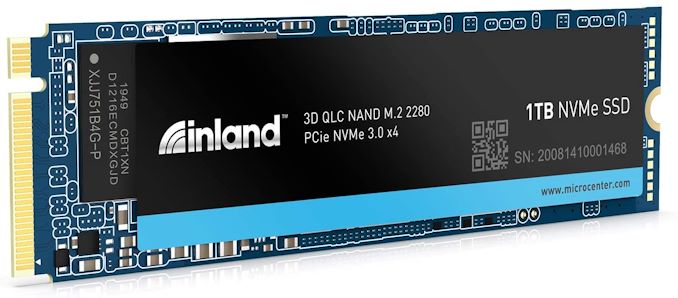
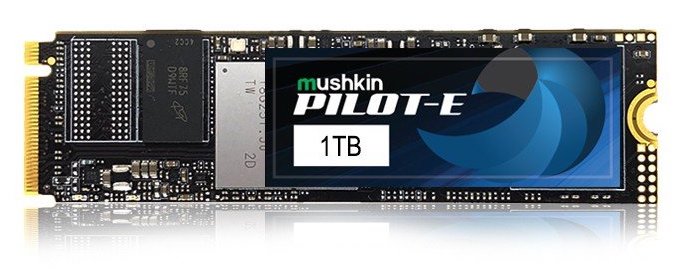
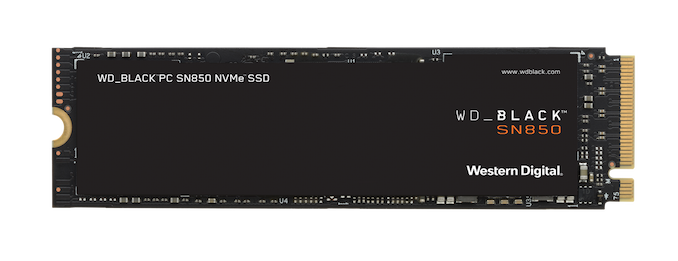
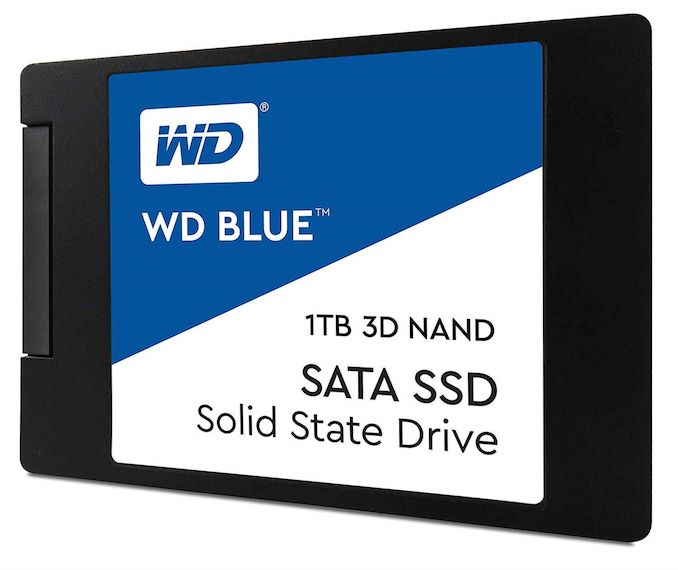









21 Comments
View All Comments
plopke - Saturday, May 15, 2021 - link
cool , nice to see they have their tools in plac enow :)johnthacker - Friday, May 14, 2021 - link
Eh, people talk about cryptocurrency mining, but mining has been around for a while and never had this effect. The larger issue is that (for very understandable reasons) most governments (especially the US, which gave more money than most, structured more as unemployment than as payroll support directly to companies) have tried to keep the same nominal amount of money in people's hands, even if they can't really work. But there are whole classes of things that people can't spend on, largely services like vacations, entertainment, and so on. So all that money goes into goods that people can use, especially things related to the home.That naturally comes out in shortages and price increases for those things. It's not necessarily going to cause a general long-term inflation, so long as all those services come back this summer. Once people are spending their money on haircuts, concerts, bars, vacations, amusement parks, and everything else, that will get things back in balance. But you're not going to see it until most places are vaccinated and things are back to normal.
johnthacker - Friday, May 14, 2021 - link
For example, there are similar price increases in lumber in North America, but it's impossible to blame that on cryptomining. Same with home gym equipment (since people don't have gym memberships.)johnthacker - Friday, May 14, 2021 - link
And no one is using PS5s for mining, either.psycotria - Thursday, December 9, 2021 - link
OT reply to OT - Propagandize much? We are never going to go back to pre-COOF “Normal” by complying with the Cabal’s DICTATES. Turn off the TV to cure the Midterm Variant, or whatever the latest fearporn They are pushing. A jab that doesn’t prevent or contain is dangerous genetic engineering Russian Roulette. Taking any experimental, secret sauce is foolishness at very best. Take Vit C, D & zinc supplements, prevent. HCQ & ivermectin are suppressed “cure for the common cold” aka coronavirus. Question Everything! Your mileage may vary. Let’s go, Brandon!Slash3 - Friday, May 14, 2021 - link
SK Hynix's 1TB P31 is down to about $105 on Amazon as I type this (15% off price in chart), making it a very good option for a mid-range, well rounded drive. WD's 4TB Blue SATA SSD was also about $330 a day or so ago, but looks to have returned to regular pricing.Billy Tallis - Friday, May 14, 2021 - link
15% off the usual P31 list price would be $114.74, not $105. I'm seeing a 15% coupon at the moment, but such deals and other kinds of discounts have been intermittent for months. I choose to list the price that's consistently available and can be seen without having to log in and put the drive in your cart and get halfway through the checkout process.Tomatotech - Monday, May 17, 2021 - link
Hi Billy Tallis, could you consider adding a price tracker showing changes in prices over time? E.g for 500GB, 1TB, 2TB, 4TB etc sata & NVMe drives?It would help to see how the market is evolving over time, and also help with planning future purchases. To reduce work, I suggest just using the price of whatever drive Anandtech recommends in a given category (i.e capacity and type of drive remains constant over time but model/ manufacturer varies).
Up to you of course but could be useful and would bring more page-views.
kn00tcn - Thursday, June 24, 2021 - link
....why? pcpartpicker has multiple price trackers per product segment, storage size, individual part modelsGCappio - Monday, May 17, 2021 - link
Look, there was a GREAT DEAL for Samsung 970 EVO plus 1TB, down to € 134 a few days ago (including tax) at AMAZONSo I bought one. When they charged my credit card, it was even cheaper, € 114!! FANTASTIC! That's US$ 138,55